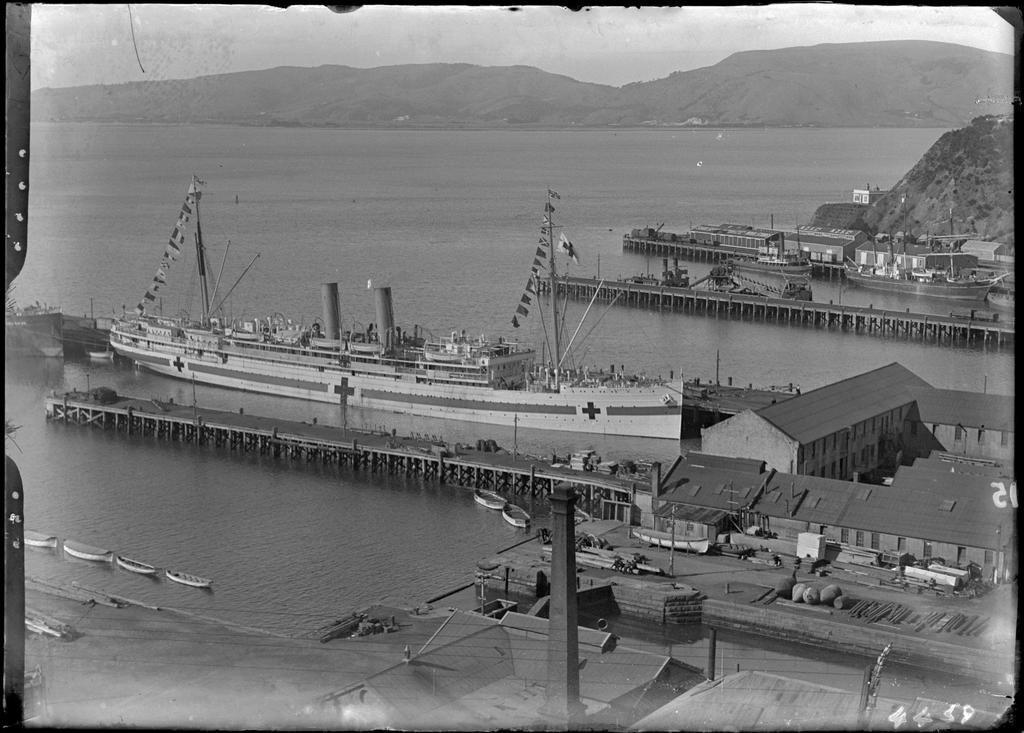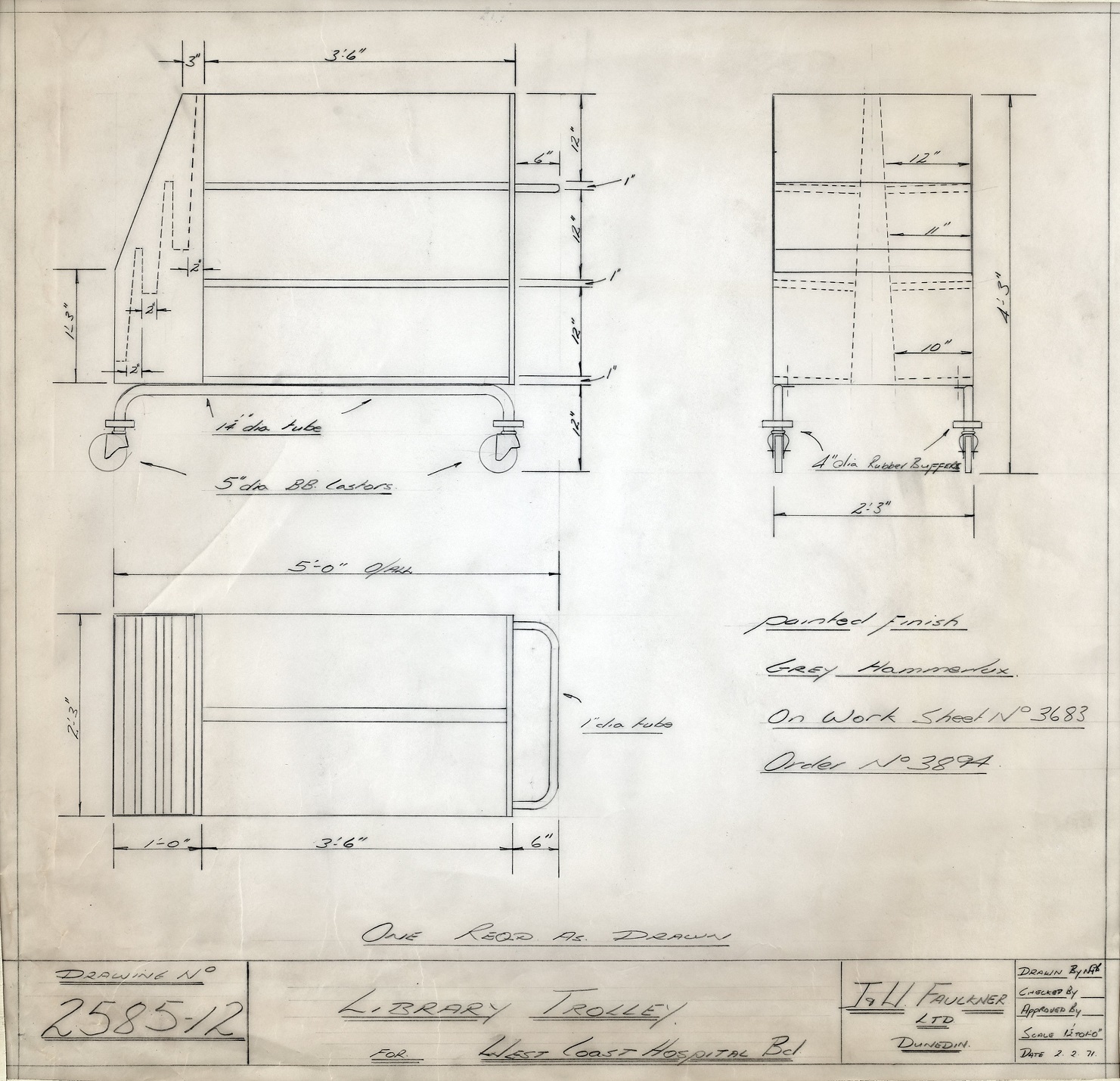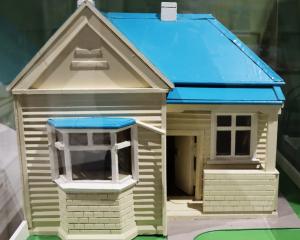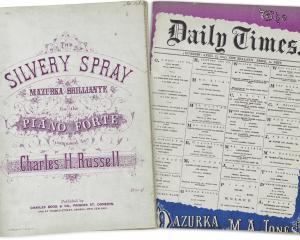J.&W. Faulkner Ltd, a long-running Dunedin business, shaped the material culture of hospital care during the first half of the 20th century, writes Andrew Lorey.
With construction continuing at the new Dunedin Hospital site, it is the perfect time to explore how products made by a long-running Dunedin company shaped patients’ and caregivers’ experiences of hospital care throughout Aotearoa.
From outfitting the country’s two hospital ships during World War 1 to manufacturing a wide range of beds, trolleys and other equipment designed for hospital use, the Ōtepoti Dunedin metalworking firm of J.&W. Faulkner Ltd, played a prominent role in New Zealand’s healthcare sector for more than 50 years. Archival and photographic material from Uare Taoka o Hākena Hocken Collections helps tell the little-known story of this important local business.
Notices advertising the smithing and wirework services of J.W. Faulkner, of North East Valley, appear in the Evening Star and Otago Daily Times beginning in September 1887, and the corporate entity J.W. Faulkner & Sons Ltd was legally incorporated in 1896. By the early 1910s, the Faulkner firm had become so successful manufacturing livestock netting, bedsteads, ornamental wirework and cast-iron fencing they had relocated multiple times, first to a property on Cumberland St (next to what was then the Leviathan Hotel) and later to their long-term home at the corner of Castle and St Andrew Sts.
In January 1913, company founder James William Faulkner died after a brief illness. Managerial responsibilities then fell to his wife, Alice, and to their sons, James Sydney and William Henry Faulkner. Alice died a year later, but the firm remained attuned to markets that could sustain the business. Little did the Faulkner brothers know, an unprecedented global war would ultimately give J.&W. Faulkner an opportunity to showcase its work.
In May 1915, the tragic events at Gallipoli prompted New Zealanders — led by Governor-General Lord Liverpool — to start a public subscription campaign to fund the production of a dedicated hospital ship that could transport injured service members from conflict zones to military hospitals. Dunedin’s Union Steam Ship Company volunteered its passenger steam ship Maheno for refitting and military leadership began to identify local businesses that could supply necessary equipment for the ship.
Published information is scarce when it comes to documenting the alterations that prepared the ship for military service, but a surviving memo addressed to Lieutenant-Colonel Alexander Falconer fills in a few key details. The document confirms that authorities commissioned the Faulkner firm to manufacture swing cots, basin rings and dressing wagons (among other equipment) under enormous time-pressures. Ultimately, workers defied the odds and completed the
Maheno’s refitting at Port Chalmers within just 40 days.
Following the war, a notice published in the Otago Daily Times from August 1925 reveals the next stage in the firm’s history. For reasons unknown, the notice described the dissolution of the Faulker brothers’ business partnership. By May 1926, now solely under James Sydney Faulkner’s direction, the company won a gold medal for "hospital bed and furniture" at the New Zealand and South Seas Exhibition, which took place in Dunedin. Clearly, the firm had built a reputation for its hospital-related work during and after World War 1.
Historical job indexes provide a rich record of the Faulkner firm’s manufacturing and design activities between 1925 and the early 1970s. Some intriguing examples from the 10 years following the New Zealand and South Seas Exhibition include a "soiled linen conveyor" designed for the Wellington Hospital Board, an "electric lantern" for Dunedin’s Chalet Hospital at 296 High St and an "instrument cabinet" for Wellington’s Lewisham Hospital. Moving through the middle part of the 20th century, commissions included a "teapot — special hinge" for Christchurch’s Sunnyside Hospital, a "trolley for polariod [sic] unit" for Waitaki Hospital Board, and, in 1971, a "library trolley" for the West Coast Hospital Board. Some schematics and plan drawings exist within the J.&W. Faulkner records held at Hocken Collections, but in many cases, notations within these job indexes provide the only remaining documentary traces that describe the company’s work.
Echoing the company’s presence at the New Zealand and South Seas Exhibition, a large number of photographs within the firm’s archives at the Hocken show how J.&W. Faulkner used trade fairs and exhibitions throughout Aotearoa to highlight its manufacturing achievements and build its customer base. The photographs not only document different types of hospital equipment that the firm produced; they also provide insights into how the company marketed its business and constructed its brand identity during the middle part of the 20th century.
This overview provides only a tantalising glimpse into the contributions made by J.&W. Faulkner to Aotearoa’s hospitals during the first half of the 20th century. Readers, researchers and members of the public can view material from any of the firm’s 70 boxes or 50 folders of plan drawings at Uare Taoka o Hākena Hocken Collections during our opening hours between 10am and 5pm Tuesday to Saturday.
Formerly Archivist at the University of Cambridge’s McDonald Institute for Archaeological Research, Andrew Lorey is a collections assistant (published and special collections) at Uare Taoka o Hākena Hocken Collections. Visitors can attend free behind-the-scenes tours at Hocken Collections, 90 Anzac Ave, on Thursdays at 11am (no booking required).














![‘‘Neil’s Dandelion Coffee’’. [1910s-1930s?]. EPH-0179-HD-A/167, EPHEMERA COLLECTION, HOCKEN...](https://www.odt.co.nz/sites/default/files/styles/odt_landscape_small_related_stories/public/slideshow/node-3436487/2025/09/neils_dandelion_coffee.jpg?itok=fL42xLQ3)



